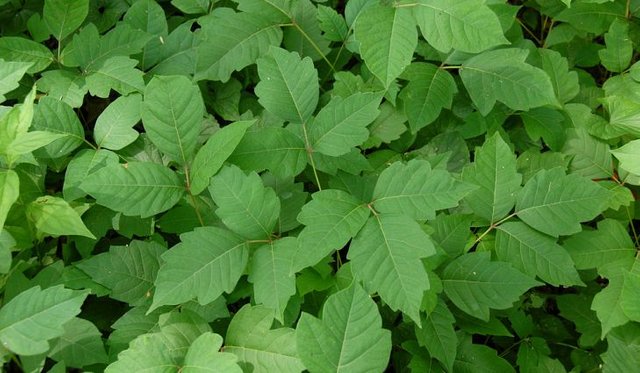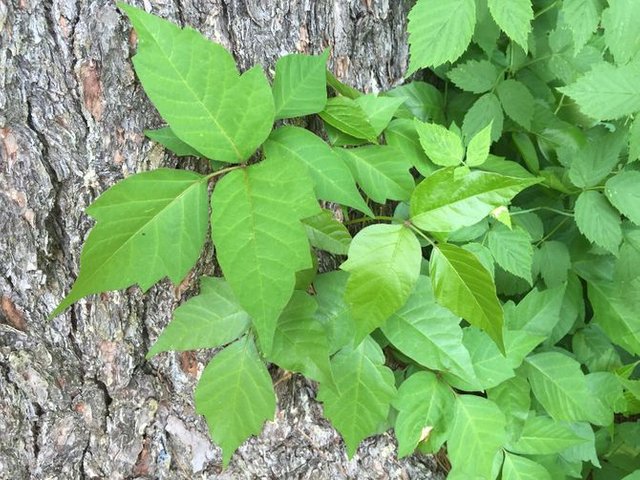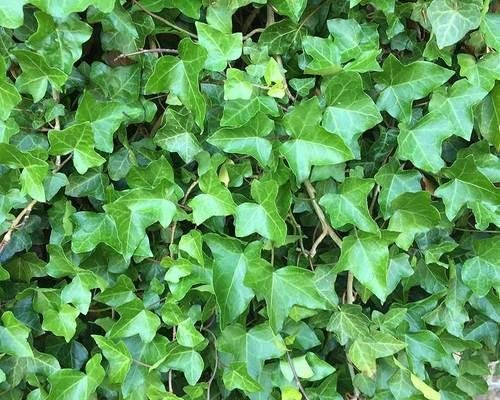


Ivy is appreciated by some gardeners for its ability to cover quickly, reviled by others for its invasive tendencies. Spreads horizontally over the ground; also climbs on walls, fences, trellises. Sometimes a single planting does both: Wall ivy spreads to become a surrounding ground cover, or vice versa. Climbs almost any vertical surface by aerial rootletsa factor to consider in planting against surfaces that must be painted. A chain-link fence planted with ivy soon becomes a wall of foliage. As a ground cover, it holds the soil, discouraging erosion and slippage on slopes. Roots grow deep and fill soil densely; branches root as they grow, further knitting soil.
Thick, leathery leaves are usually lobed. Mature plants will eventually develop stiff branches that bear round clusters of small greenish flowers followed by black berries. These branches have unlobed leaves; cuttings taken from them will also have unlobed leaves and will produce shrubby rather than vining plants. Such shrubs taken from variegated Algerian ivy (Hedera algeriensis 'Gloire de Marengo') are known by the name ghost ivy. Plain green Hedera helix 'Arborescens' is another selection of this shrubby type.
Plant ivy in spring or fall. Standard spacing is 1122 feet apart. Amend soil (to depth of 812 inches if possible) with organic matter such as ground bark or peat moss. Before planting, thoroughly moisten soil; also make sure transplants' roots are moist.
Most ivy ground covers should be trimmed around edges two or three times a year (use hedge shears or a sharp spade). Fence and wall plantings likewise need shearing or trimming two or three times a year. When ground cover builds up higher than you want, mow it with a rugged rotary power mower or cut it back with hedge shears. Do this in spring so ensuing growth will quickly cover bald look.
Many trees and shrubs can grow compatibly in ivy ground cover, but small, soft, or fragile plants will be smothered. Ivy ground covers can be a haven for slugs and snails and can also harbor rodents, especially if the ivy is never cut back.


https://www.thesprucepets.com/thmb/1ealQ5qmaz3qG3irijzOZHFJ3z8=/450x0/filters:no_upscale():max_bytes(150000):strip_icc()/GettyImages-128108710-1--5751a2233df78c9b46246a23.jpg
Culture
Most cultivars of ivy grow best in bright light, but not direct sun. They tolerate low to medium light, but growth is reduced and variegated forms may turn all green. To maintain the bright color of a variegated ivy, give it plenty of light. Ivies can be grown with artificial light, or near a north, east or west window.
Water ivies thoroughly, then let the soil dry to the touch to a depth of ½ inch before watering again. Although ivies prefer moderate humidity, they will tolerate normal low home levels. Raise the humidity by setting the plants on a tray of wet pebbles or perlite. Do not allow ivies to stand in water. Ivies benefit from good air circulation, and they should not be crowded.
Ivies do well at cool to moderate room temperatures of 50 to 70 °F during the day and about 5 to 10 °F lower at night.
A good, rich commercial houseplant potting mix will be fine for ivy. They should be planted in a container with good drainage.
Fertilize ivies monthly while they are actively growing with a foliage houseplant fertilizer, according to the label directions. Do not use fertilizer when plants stop growing either in the heat of summer, or when temperatures are cool.
Propagation is by rooting stem or tip cuttings. Most types of ivy will root easily in water. Repot ivies when the plants become top-heavy or root bound or dry out too rapidly. The new pot should be no more than 1 inch larger in diameter than the pot it was originally grown in. Using too large a pot can cause the soil to stay wet too long and lead to root rot.
Ivy topiaries are made by planting a small-leafed ivy cultivar at the base of a sphagnum moss- stuffed wire frame. The plants are kept trained and pinned to the frame. They need to be pruned frequently to keep the shape clear. Sometimes two types of ivy will be grown on a frame to show details, such as eyes, on an animal topiary. Be especially careful to keep the upper portions of a topiary moist.
They can also be trained to different shape frames such as circles, hearts, cones, or pyramids. Choose plants with long stems and weave them around the frame. The frame may either be a pre-made one or made from heavy-duty galvanized wire. If making a frame, be sure to extend the legs of the frame the full depth of the pot to give the planting more stability.
magoo-2 found a series of multi accounts of a same owner is following your articles to cheat your generous rewards.
magoo-2 found these accounts are suspicious & can be multi accounts of a single owner. Conclusion is based on last 1 year transactions:
@jacqueline5
@african1
@merina
@marizanne
@miller1
@jerry1994
@aarshi
@nawmi
@maisha
@jenifer2
@masud1
@jerry2
@selina2
@bingham
@mulder2000
@umess
@neerose123
@diaa07
magoo-2
Check our latest multi comment spam update report